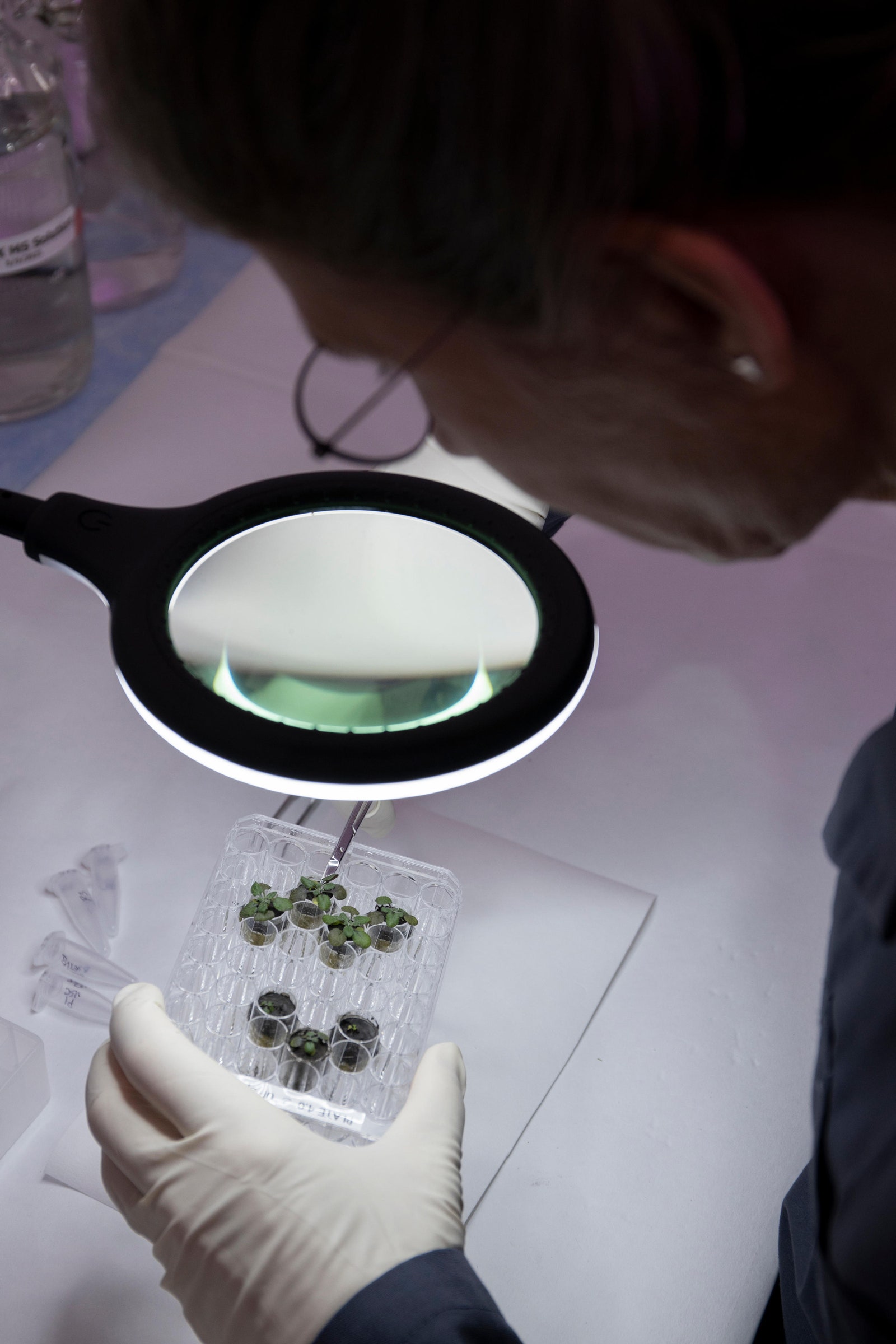Photograph: Tyler Jones
NASA performed a few experiments following the 1960s and ’70s moon landing missions that brought back lunar material, but those were nothing like what Paul and Ferl attempted. “A small amount of regolith material was placed in contact with the plants, and the data showed there were no major negative effects,” says Sharmila Bhattacharya, NASA’s chief scientist of astrobionics. But Paul and Ferl’s new research is more ambitious. “This is a unique experiment, to actually grow those plants in the regolith, of course with supplementary material. This is the first time, and it’s why we’re quite excited,” Bhattacharya says.
Today, NASA doesn’t have much regolith left to share with scientists, but they’ve been gradually handing it out for high-priority research. The agency recently opened up one of the last samples collected, in 1972, to study the regolith in the Apollo 17 landing area. The new Artemis program, Apollo’s successor, is now ramping up, and since astronauts will be returning to the moon in a few years, the agency anticipates many more samples to come.
Learning how to grow food off-planet will likely be important, since every gram transported to space takes up room on a craft and adds to its costs and fuel requirements. Plus, in a remote, isolated environment like a space station or lunar habitat, a little greenery could go a long way for the mental health of the crew as well, even if it’s not providing a ton of food. “Having the touch and feel of plants can have psychological benefits,” Bhattacharya says.
For these reasons, astronauts and researchers have already begun testing different ways to grow food on the International Space Station. Paul and Ferl’s research could be an important step forward toward space farming. “This is an impressive study for two reasons. They’re using the actual Apollo samples, and they’re applying modern biology tools,” says Kevin Cannon, a geologist and space resources researcher at the Colorado School of Mines, who was not involved in the paper. But it’s possible that other options for growing plants and vegetables without using dirt, like hydroponics, aeroponics, or growing cells in a reactor, might be more efficient for ISS or lunar missions, Cannon says.
On the other hand, travel to Mars will require long trips and extended visits. And since the planet’s so far away, it will be even more difficult to ship food supplies, which might make it a better place to try growing crops on a larger scale, he says. Researchers have already started growing plants, including thale cress, in simulated Martian soil, and they could get a shot at experimenting with the real thing when NASA returns samples from the Perseverance Mars rover mission. If it works, a Mark Watney-like botanist-astronaut could one day grow potatoes on the Red Planet—but not until someone works out ways to help Earth plants thrive, instead of just survive, in space regolith.
Still, for Paul and her colleagues, space agriculture, or at least space gardening, will be in our future. “Here we are introducing a portion of the moon to biology, and it works. To me, that is so symbolic. When we leave Earth, we will take plants with us,” she says.



